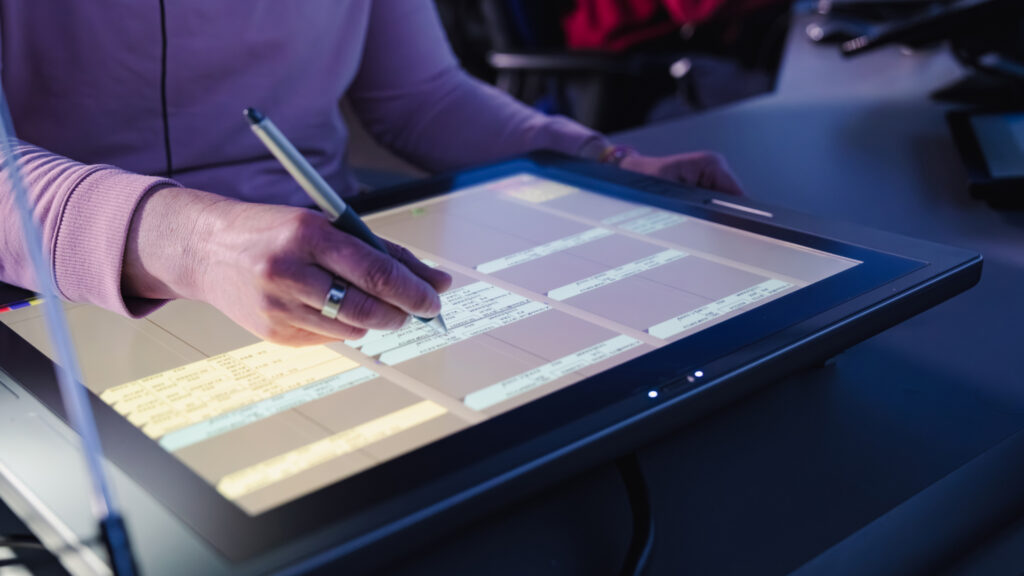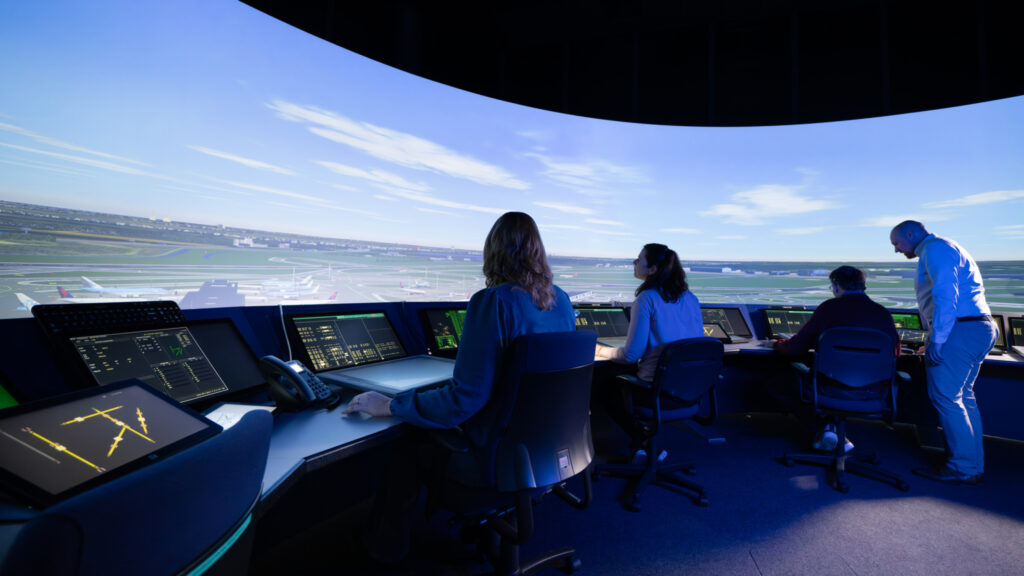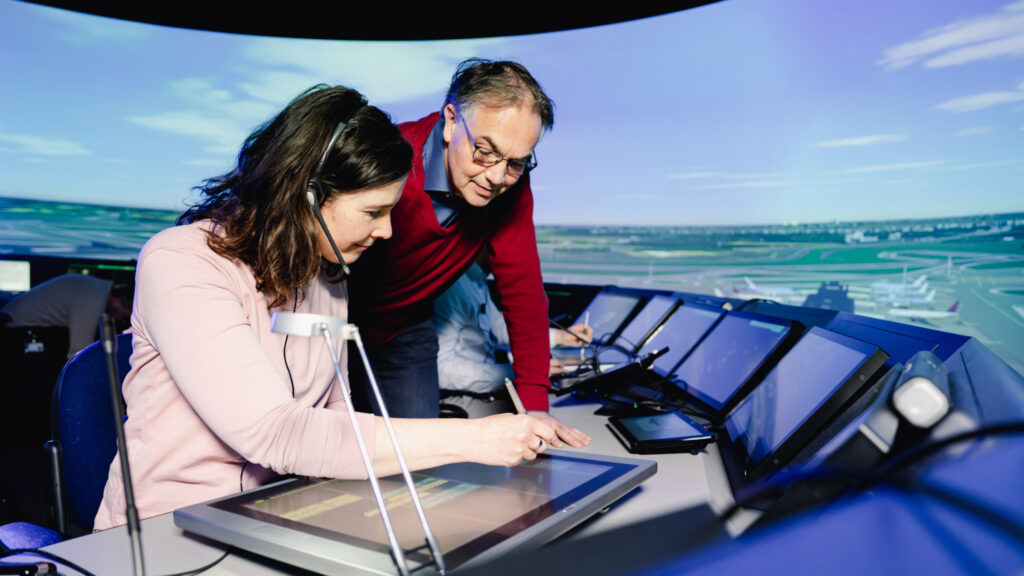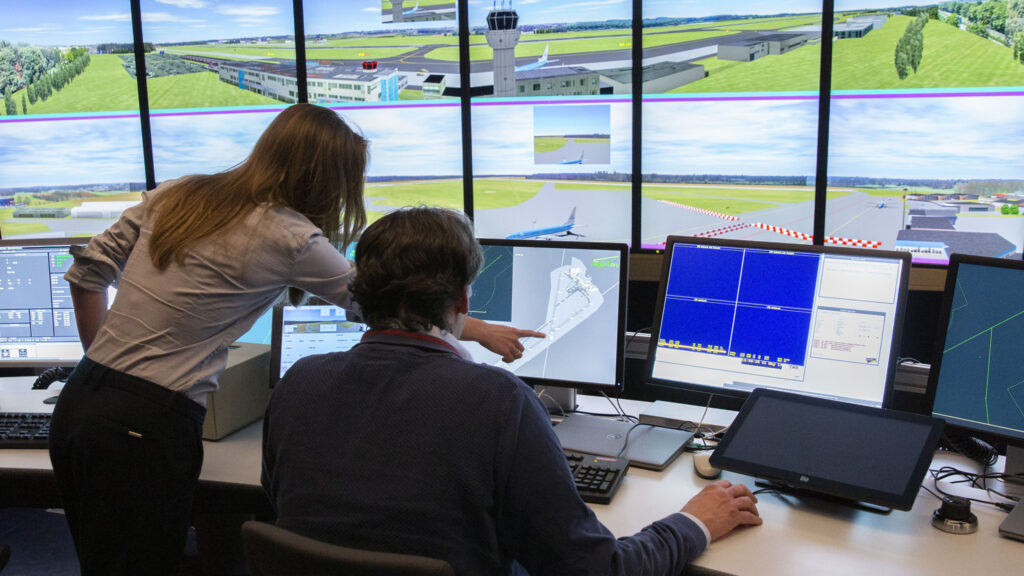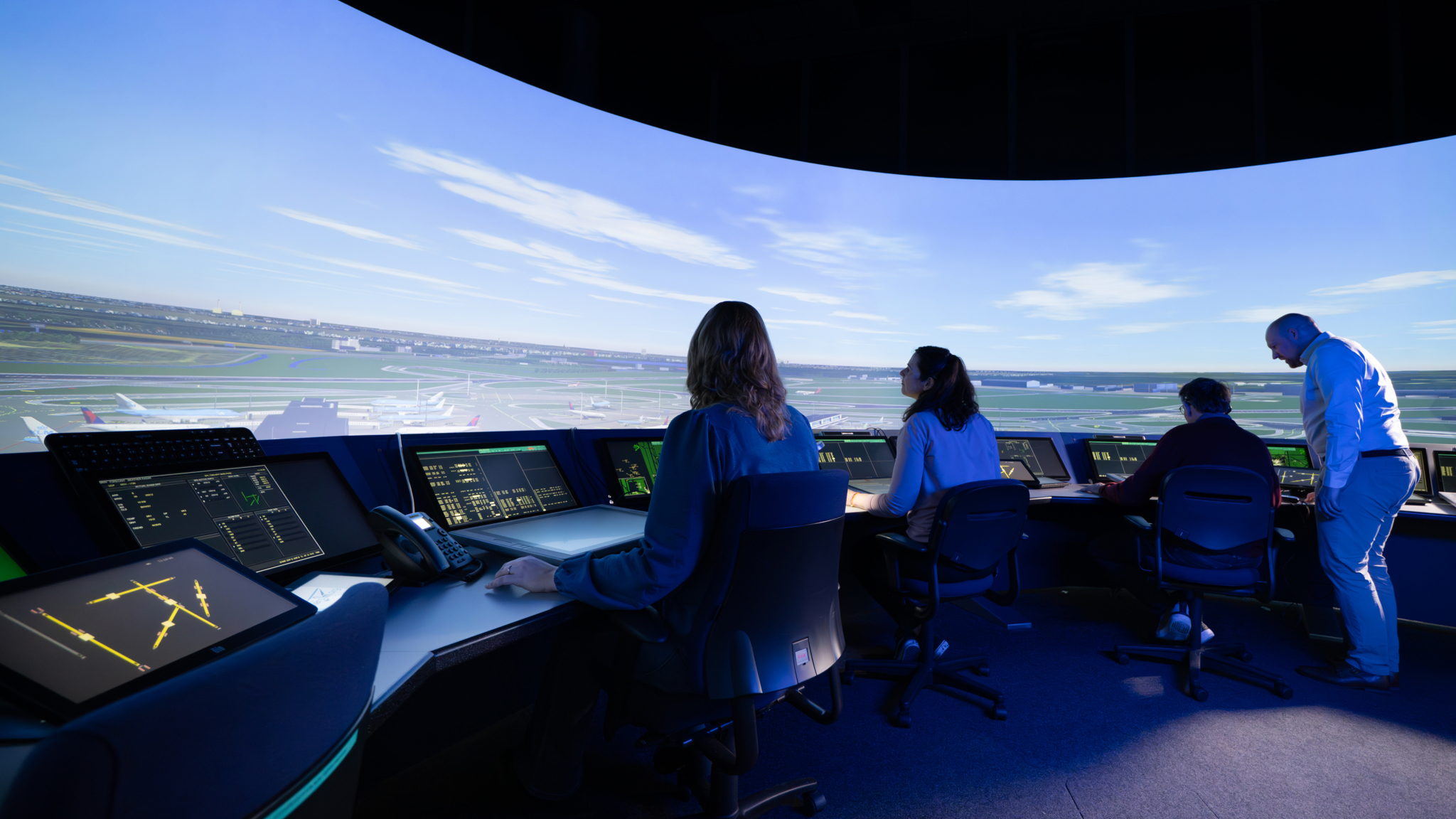The experimentation facilities at NLR are equipped with realistic Air Traffic Controller Working Positions (CWP), simulator (pseudo) pilot and supervision positions and support more than 50 actors to participate simultaneously in one large simulation spanning multiple centres. On the other side of the spectrum, NARSIM’s scalability also allows for small-scale prototyping with one working position for detailed analysis and interaction.
NARSIM is developed in-house by NLR and therefore has a high degree in configurability, flexibility, interoperability and adaptability. NARSIM simulates air traffic control platforms of all major manufacturers (also concurrently in one simulation). Connections to a range of external systems, such as flight simulators, are also supported.
NLR’s facilities consist of the following components:
- NARSIM radar; an environment with 25+ radar controller working positions.
- NARSIM tower; a 360° projection system with 9 tower controller working positions.
- NARSIM remote tower; a research set-up for remote tower concepts with 2 controller working positions.
- More than enough pseudo pilot positions, physically separated from the controllers.
Main features
NARSIM Tower facility
The NARSIM Tower facility uses a 360 degrees field-of-view projection screen, 11m in diameter and 4.5m high, equipped with a laser projection system that results in eye-like resolution and an immersive experience of looking out of a control-tower on an airport. With room for 9 controller working positions setup for different roles, NARSIM Tower is one of the largest tower research simulators in Europe.
The tower visual system can simulate realistic weather conditions, such as bad visibility, snow and rain and also supports day and night view on a multitude of airports. All current and modern tower controller system support tools are available such as radar surveillance systems, multilateration ground radar, flight data processing and its UI’s, safety nets, stopbar and light control panels, A-SMGCS (Advanced Surface Movement Guidance and Control Systems) tools, voice communication systems and electronic flight strips (EFS).
NARSIM Tower has a proven track record and has been used as a validation platform in European ATM research (SESAR) by research centres and ANSPs but also as a training platform in the training of new Air Traffic Controllers or in the conversion training introducing new operational subsystems. The system supports the simulation of all types of traffic (fixed wing air traffic, helicopters, drones, ground vehicles, etc.) typically found in an airport environment.
NARSIM Radar facility
The NARSIM Radar facility consists of a 25+ radar controller working positions. Each working position can act as a tactical, planner or feeder position for controlling upper-airspace en-route, area control or approach and terminal area traffic. The radar working positions can be run to emulate (in both hardware and software) any ATC platform such as iCAS/iTEC (INDRA), AAA (LVNL), MADAP system (EUROCONTROL), ATCAS P2 (DFS), TopSky (Thales) and others. Our customers include LVNL, MUAC (EUROCONTROL), LFV, DFS, AustroControl and several military ANSP’s.
The underlying system is a trajectory based operations (TBO) system with the following main features:
- Enhanced Mode-S (e.g. for Pilot Selected Level)
- ADS-C/CPDLC (e.g. Extended Projected Profile, EPP)
- Planning and support tools like arrival management (AMAN/XMAN), interval management (IM), time-based separation (TBS), optimized runway delivery (ORD)
- Coordination tools like SYSCO/OLDI
- Safety net systems like Short Term Conflict Alert (STCA) and Medium Term Conflict Alert (MTCD) and monitoring aids (MONA).
NARSIM Remote Tower facility
The NARSIM Remote Tower environment can be used for remote tower research and training; both single airport and multiple airport operations are supported. The system consists of nine 4K HD screens in 120 degrees arc to simulate the view from remote cameras on one or several airports at the same time. The two controller working positions are equipped with three 5K screens each, a touch screen for voice communication and (simulated) Pan-Tilt-Zoom camera operation and can be equipped with the same tools and systems as full NARSIM Tower.
NARSIM Software platform
The NARSIM software platform is the foundation for both the radar and tower facilities and is designed as a client-server architecture for scalability, flexibility, interoperability and above all adaptability. The NARSIM platform is equipped with several tools to support the creation and validation of advances scenarios. NARSIM runs on a single host or (for large simulations) on multiple servers, even in parallel with other simulations. NARSIM uses consumer (COTS) hardware and requires relatively low bandwidth and CPU.
During a simulation, NARSIM records many system and human performance metrics that can be used in the post-processing and analysis phase. There are also applications available for the preparation, design and setup of simulations (for NARSIM Radar, Tower and Remote-Tower) as well as the post-processing and analysis of results.
NARSIM Community
The NARSIM software platform is shared with partners in a NARSIM User Community. These partners operate their own NARSIM set-ups for their specific research and training needs and also actively participate and contribute to support the development of NARSIM. NLR also offers services to support partners that acquire the NARSIM software platform.
